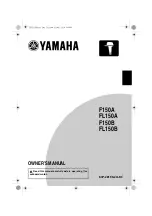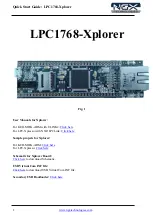
Your propeller is a key factor in your boat’s performance, and your
satisfaction; so don’t overlook it. Maintain it for peak power, performance
and efficiency. Consult YamahaOutboards.com/Propellers or your
authorized Yamaha Marine dealer for more information.
PROPELLER SOLUTIONS
Proper performance Needs
Scan to see a video
about propeller care.*
Scan to read more about
cleaning in Yamaha’s Prop Shop publication.*
It’s all in the eyes.
Give your prop a good look as part of your pre-launch checklist. Are there any
bends, nicks, cuts or cracks? Any of these will rob performance and potentially cause damaging
vibration to your outboard. If found, get the prop examined and repaired by a qualified propeller
repair facility. Your local Yamaha Marine dealer is a great place to start.
Something missing?
If you’ve noticed a decrease in your boat’s performance, but your outboard checks
out fine, you’d do well to suspect your prop. Suspended grit, sand and silt in the water slowly eat
away at your propeller’s edges. When this happens, your prop may
look perfect, but the worn edges can seriously degrade performance.
Beware corrosion.
Even stainless steel props can experience surface
discoloration. But it’s easy to clean and protect most props.
Try these simple tips:
•
Rough Cast Mag Wheel Cleaner.
Spray on (use caution near painted surfaces), do not let dry
or sit more than 30 seconds, agitate with dish sponge, rinse thoroughly, dry, apply paste wax.
•
Toilet Bowl Cleaner, Hydrogen Peroxide, or Calcium Lime & Rust Remover.
For spot cleaning:
spray on or put on a rag and wipe over stained area (do not allow to dry). Rinse thoroughly, dry,
and follow up with paste wax.
•
Mild Rubbing Compound or Metal Polishing Paste.
For difficult stains: apply to pad and rub in
a circular motion until stain is diminished. Buff with a clean cloth, apply paste wax.
Protect the propshaft.
Periodically remove your propeller(s),
check for fishing line wrapped around the prop shaft, then grease the prop shaft with
a high-quality, high-pressure marine-formula grease like Yamalube
®
Marine Grease or
Molybdenum Grease. This will help make it easier to get the prop off next time, especially in
saltwater. When re-installing your propeller, make sure to torque the prop nut to the manufacturer’s
specification, and always use a new cotter pin rather than re-using the old one.
Be prepared.
Just like a spare tire, you may need more than one prop. Whether you demand different levels of
performance or just want a spare for emergencies; having a second propeller is a very wise choice.
18















































